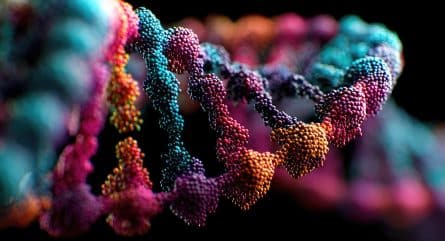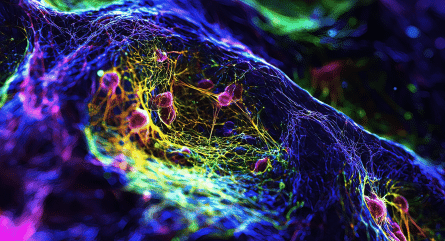For years, synthetic biology aided our efforts to treat a myriad of aliments and illnesses. Now, with significant scientific advancements, the potential for new drug discovery has never looked more promising. When searching for the latest synthetic biology revelations, the number of available stories seem endless—in the best way possible. To help, we’ve rounded up a few of the many noteworthy topics shaking up synthetic biology drug discovery conversations here at IDT.
Artificial intelligence and machine learning combine to accelerate antibody discovery
Artificial intelligence (AI) technologies now provide an antibody design platform that combines a high-speed wet lab with machine learning (ML) to create improved molecules through learnings from each experimental cycle. New AI/ML models help determine how mutations affect an antibody’s molecular properties to better inform scientists on high-quality options that might have otherwise remained hidden. This new technology shows promise for significantly accelerating new antibody discovery. For more information, check out our antibody discovery tools.
George Church and Nabla Bio receive funding to expand AI-designed antibodies
The father of synthetic biology is at it again, working with his team at Nabla Bio to create new antibody drugs that have been specifically engineered to address challenging clinical targets and to become commercially viable. Their process combines AI technology and wet-lab experimentation capable of analyzing billions of antibody sequences to build a “biophysical fingerprint” for one million new antibodies at a time, rapidly predicting the most effective options. This new approach has the scientific community on the edge of their seats with hopes to ramp up and improve the quality of antibodies moving from lab to clinic.
SARS-CoV-2 pandemic enables researchers to pinpoint effectiveness of semisynthetic naïve antibody libraries
Earlier this year, Nature Communications published a study on the ways the SARS-CoV-2 pandemic created a surge in comparative research that highlighted the benefits of semisynthetic naïve antibody libraries. Historically, it was believed the most potent neutralizing antibodies had to be generated from convalescent patients and immunized animals. In this study, the team demonstrated how appropriately designed and constructed naïve antibody libraries can effectively provide therapeutic antibodies against viral pathogens, potentially saving critical time and resources during future viral outbreaks.
LabGenius machine learning technology is revolutionizing drug discovery
The new platform technology, Eva™, from our friends over at LabGenius, rapidly pinpoints novel therapeutic antibodies for devastating illnesses like cancer and inflammatory diseases. This is all possible through machine learning models that can describe sequence-to-function relationships to accuracy evaluate protein fitness and improve multiple drug properties simultaneously. These ML approaches are trained to rapidly extrapolate ever-growing data libraries to make critical predications with heighted multi-parametric optimization and higher dimension perception that will dramatically reduce the historical drug discovery timeline and do so with greater accuracy.
Low-cost Mycobacterium tuberculosis (Mtb) drugs derived from engineered E. coli
Historical screening for Mtb has been complicated by the pathogen’s slow growth period and biocontainment requirements. With the expansion of chemical genetics within synthetic biology, there is growing interest around new tools that will help to break through remaining challenges on the path toward new antimicrobial drug discovery.
Recently, a study sought to apply a synthetic biology framework for assaying Mtb drug targets in engineered E. coli. To do this, the research team built Target Essential Surrogate E. coli (TESEC) strains within which an essential E. coli enzyme was deleted and replaced with an equivalent target enzyme. They then screened 1,280 approved drugs and found that benazepril was an effective, expression-dependent inhibitor. Benazepril is currently used to control hypertension, but the completion of this study serves as a new proof of concept for future research to look at the 100 known conditionally essential E. coli metabolic genes for additional antibiotic discovery efforts.



























